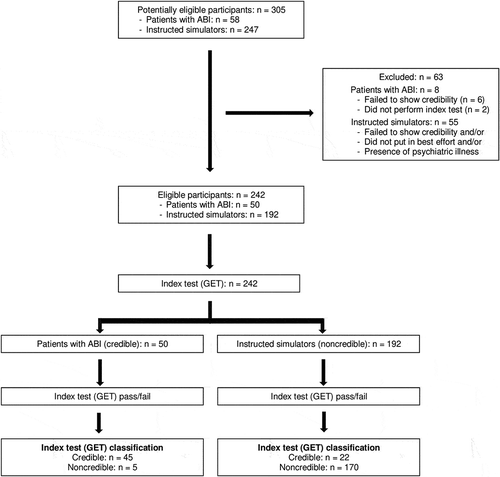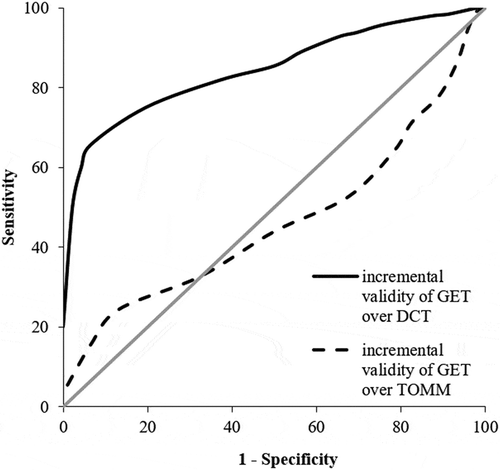Figures & data
Table 1. Characteristics of patients with acquired brain injury.
Table 2. Characteristics of participants: control group, patients with ABI, and simulation groups (Mean±SD).
Table 3. Groningen Effort Test (GET) performance of control participants, patients with ABI, and simulation groups (Mean±SD).
Figure 1. STARD diagram reporting flow of participants and diagnostic accuracy of GET-ABI index (cutoff .791).

Figure 2. ROC curve depicting diagnostic accuracy of the GET-ABI index and GET-ADHD index in identifying feigned cognitive dysfunction (n = 192) relative to genuine cognitive dysfunction (n = 50).

Table 4. Performance validity tests of control participants, patients with ABI, and simulation groups (Mean ± SD).
Table 5. Diagnostic accuracy of various validity tests in distinguishing feigned (n = 192) from genuine (n = 50) cognitive dysfunction, as indicated by levels of sensitivity, specificity, and area under the curve.
Figure 3. ROC curve depicting diagnostic accuracy of the GET-ABI index in identifying feigned cognitive dysfunction (n = 192) relative to genuine cognitive dysfunction (n = 55) after partialing out DCT or TOMM.

Table 6. Diagnostic accuracy of various validity tests to detect feigning (N(%)) per simulation strategy used: speed, inattention, memory, executive functions.
CEN-OA_19-210-File005.docx
Download MS Word (20.2 KB)Data availability statement
The data that support the findings of this study are available from the corresponding author, ABMF, upon reasonable request.
